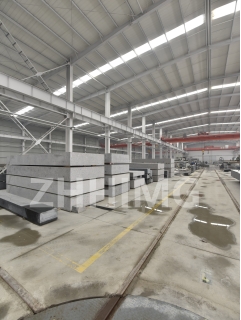The Role of Thermal Conductivity in Marble Precision Components for Precision Measurement: A Comparative Insight with Granite
Precision measurement is a cornerstone of modern engineering and manufacturing, where even the slightest deviation can lead to significant errors. Materials used in precision components must exhibit properties that ensure stability and accuracy. Among these materials, marble and granite are often considered due to their unique characteristics. This article delves into the impact of the thermal conductivity of marble precision components on their application in precision measurement and compares it with granite to understand how this feature can be effectively exploited or managed.
Thermal Conductivity and Its Impact
Thermal conductivity is a material's ability to conduct heat. In precision measurement, thermal stability is crucial because temperature fluctuations can cause expansion or contraction, leading to measurement errors. Marble has a relatively low thermal conductivity compared to metals, which means it does not easily transfer heat. This property can be advantageous in environments where temperature changes are minimal, as it helps maintain dimensional stability.
However, in environments with significant temperature variations, the low thermal conductivity of marble can become a drawback. It can lead to uneven temperature distribution within the material, causing localized expansions or contractions. This can affect the accuracy of precision components made from marble.
Exploiting and Managing Thermal Conductivity
To effectively exploit the thermal conductivity of marble in precision measurement, it is essential to control the environmental conditions. Maintaining a stable temperature environment can mitigate the adverse effects of marble's low thermal conductivity. Additionally, incorporating temperature compensation techniques in the design of precision instruments can help manage any residual thermal effects.
Comparative Insight with Granite
Granite, another popular material for precision components, has a higher thermal conductivity than marble. This means granite can more evenly distribute heat, reducing the risk of localized thermal expansion. However, granite's higher thermal conductivity also means it is more susceptible to rapid temperature changes, which can be a disadvantage in certain applications.
In conclusion, while marble's low thermal conductivity can be both a benefit and a challenge in precision measurement, understanding and managing environmental conditions can help exploit its advantages. Comparing it with granite highlights the importance of selecting the right material based on specific application requirements and environmental factors.
Post time: Sep-14-2024

